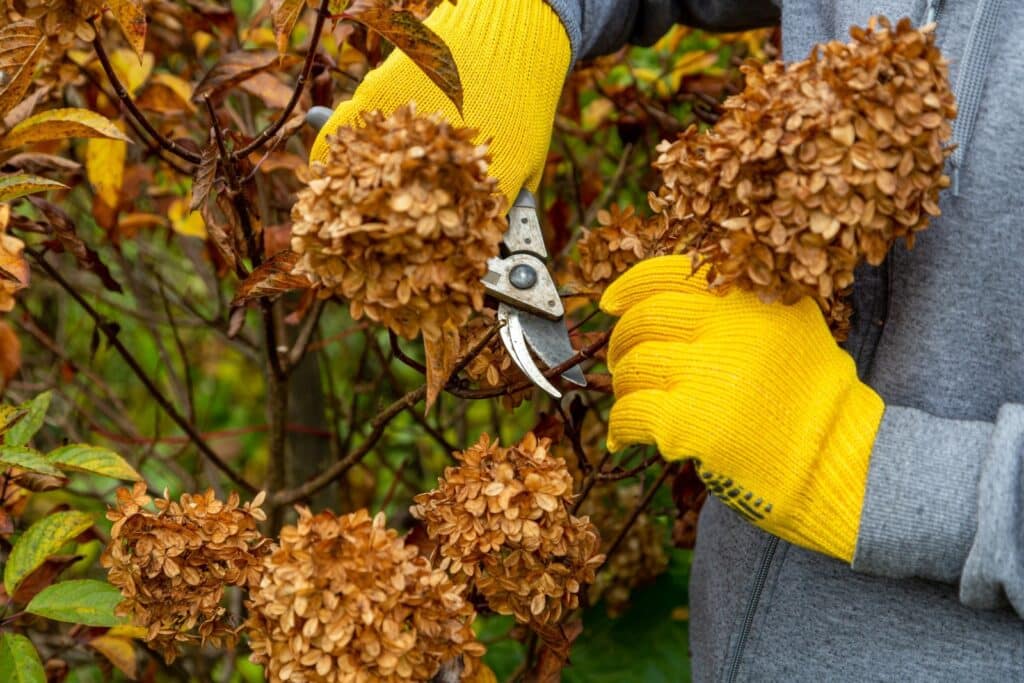
Hydrangeas come in a variety of colours from white to blue to pink. Its flowers form clusters in balls and are greatly appreciated by many.
Some varieties have the particularity of being able to change colour according to the composition of the soil and thus allow during the season to renew the aspect of its garden.
Fact: The name hydrangea comes from the Ancient Greek and means ‘water vessel’. It is a fitting name as hydrangeas need a lot of water. If you ever get a hydrangea bouquet, make sure to put it in water quickly!
PLANT
Plant your hydrangeas in autumn.
In the ground: dig a hole 3 times the size of the root ball. Pack and water.
In a pot: choose a large enough pot. Drain the bottom.
Hydrangeas love the sun but appreciate a little shade. Ideally, orient them in the northwest direction.

CARE
In the fall, remove dead stems and wilted flowers.
In early spring, prune unwanted branches about 2 cm above the first pair of buds. Clear out some branches from the centre of the shrub so that the sun can shine through.
Water thoroughly during the growing season.
In summer, water preferably in the evening. Mulching will prevent evaporation and retain moisture.
In case of oidium or mealybug attacks, you can use solutions designed for that matter.

ENJOY
The hydrangea generally blooms between June and October.
The colour of the flowers will depend on the care you have given it and the type of soil in which the hydrangea has grown.
The more calcareous the soil, the pinker the flowers will be.
The more acidic the soil, the bluer the flowers. If you want your hydrangeas to lean more towards blue, there are fertilizers made specifically for that purpose that acidifies your soil to make them turn from pink to blue.
